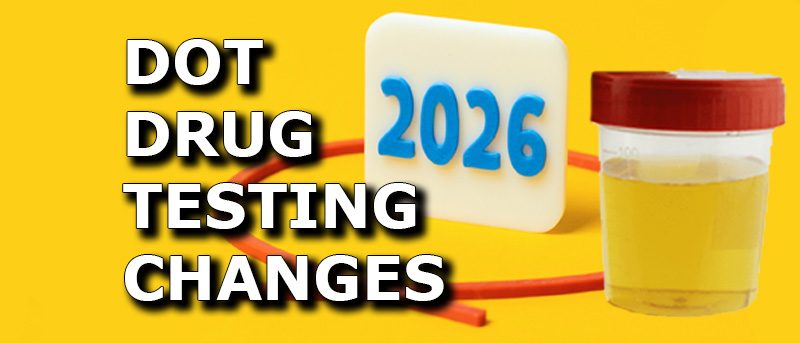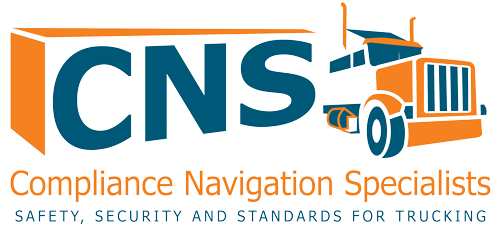What DOT Drug Testing Changes Are Coming in 2026 — And How DERs Can Prepare Now

As we approach 2026, significant changes to DOT drug and alcohol testing procedures are taking shape.
From the long-awaited implementation of oral-fluid testing to a shift toward electronic recordkeeping, the responsibilities of a company’s Designated Employer Representative (DER) are evolving.
These updates will not only impact how you manage testing logistics, but also how you communicate expectations, maintain records, and stay compliant in an increasingly digital regulatory environment.
For DERs—often the first line of defense in a company’s DOT compliance program—now is the time to prepare.
This article explores the upcoming changes, their practical implications, and the steps every DER should take to stay ahead of the curve.
What’s New or Expected in 2026
1. Oral‑Fluid (Saliva) Testing is Officially Allowed
After years of development, oral-fluid testing is now permitted as of December 5, 2024 under updated DOT Part 40 regulations. This alternative to urine testing offers a less invasive, more immediate way to detect recent drug use. However, implementation depends on at least two HHS-certified laboratories being ready to process oral-fluid samples—expected sometime in late 2025 or early 2026.
- DER Tip: Begin updating your policies to include oral-fluid testing procedures and qualifications for collectors.
2. Sunset of Temporary Monitor Flexibility
During the initial rollout of oral-fluid testing, DOT allowed employers to use non-qualified personnel to monitor mock collections. This flexibility ends one year after the first oral-fluid lab is certified by HHS.
- DER Tip: Identify and train fully qualified collectors now to avoid scrambling once temporary allowances expire.
3. Technical Clarifications to Part 40
Effective June 21, 2024, DOT issued several technical corrections to Part 40, ensuring language consistency and clarifying collector responsibilities—especially concerning oral-fluid collections.
- DER Tip: Review collector training documents and vendor agreements to ensure compliance with updated terminology and procedures.
Related: DOT Amends Oral Fluid Drug Testing Rule Again
4. Electronic Signatures & e-Forms Expected Soon (PHMSA)
A PHMSA proposed DOT rule (Docket DOT-OST-2022-0027) could legalize the use of electronic signatures, digital custody and control forms (eCCFs), and electronic storage for all DOT drug and alcohol testing records. If finalized, this could streamline workflows and reduce paper waste for DERs.
- DER Tip: Evaluate your recordkeeping system’s readiness for e-signature integration and cloud-based storage in line with DOT security standards.
5. Testing Panel Revisions Looming
The Department of Health and Human Services (HHS) has added fentanyl to its Mandatory Guidelines, effective July 7, 2025, for federal agencies. However, DOT has not yet adopted this change for transportation workers.
- DER Tip: Keep an eye on DOT updates in 2025, as they may follow HHS’s lead with expanded testing panels.
How a DER Should Prepare for 2026
Update Policies & Procedures
- Revise your drug‑testing policy to include oral‑fluid testing as another option.
- Clarify roles of qualified collectors, trainers, and mock‑collection monitors under §§ 40.33 and 40.35.
- Monitor DOT notices for the official sunset date of temporary monitoring flexibility.
Train Staff & Service Agents
- Train DERs, collectors, and service agents on oral-fluid collection protocols, including volume indicator checks, observation steps, and CCF requirements.
- Designate train‑the‑trainer people carefully—ensure they meet Part 40 standards and keep documented records (per § 40.35(b)).
Plan for Electronic Transition
- If DOT finalizes the electronic signature/storage rule, be ready to:
- Switch from paper to electronic CCFs, alcohol testing forms (ATFs), and MRO sign-offs.
- Update your record-retention and IT infrastructure to handle secure digital storage.
- Ensure e-signature authenticity and confidentiality compliance.
Assess Testing Panel Impacts
- Stay informed whether DOT eventually adopts HHS panel revisions, including fentanyl. Even though these don’t apply now, a future DOT rule could trigger changes in DER procedures.
Audit & Prepare MIS Reporting
- Check that your MIS reports align with updated reporting timelines and formats, especially if electronic forms become allowed.
- Ensure your MRO, collector, BAT, and SAP agreements reflect new procedures and storage methods.
Interesting Facts & Compliance Insights
- Oral fluid testing is less invasive and provides a faster “snapshot” of recent drug use—ideal for quick turnarounds in safety‑sensitive roles.
- A qualified urine collector is not qualified for oral-fluid testing unless they undergo separate training.
- Once HHS certifies a DOT‑approved oral‑fluid lab, the temporary flexibility for monitor training ends—often within a year. DERs should proactively track this milestone.
- DERs may be liable if they rely on outdated mock-collection procedures or service agents who aren’t fully compliant.
Timeline Highlights
- December 5, 2024 – Oral‑fluid testing becomes officially permitted under DOT rule.
- June 21, 2024 – Technical amendments to Part 40 become effective.
- Late 2025 / early 2026 – Likely adoption of the PHMSA electronic‑records/signature rule (if finalized).
- Sometime in 2025–2026 – HHS‑certified oral‑fluid labs may trigger end of mock‑collection monitor flexibility.
- 2026 – DERs should be fully transitioned to new testing norms
Early planning, proactive training, and clear documentation are your strongest allies. Stay tuned to ODAPC email updates and the Federal Register for official dates and finalized rule text.
CNS Drug and Alcohol Services
At CNS, we offer a comprehensive Drug and Alcohol Consortium Service and are a certified consortium and third-party administrator (C/TPA).
Our experts ensure that all DOT rules and regulations are followed, including the implementation of random drug tests for you and your drivers, updating your company drug testing policies, record retention and document purge management.
We take all the necessary steps and precautions to keep you and your drivers compliant with the DOT drug and alcohol testing requirements.
Need help reviewing your policies or want to join our consortium, fill out the form below.
Questions about DOT Compliance, Licensing, Audits, Programs, etc.?
Our DOT Specialists are here to help!
What are you searching for?
Is DOT Compliance your Top Priority?
Our DOT Compliance Programs ensure it is your top priority and keeps your business running.
Related Services
Subscribe to our Monthly Newsletter
Receive the latest transportation and trucking industry information about FMCSA and DOT Audits, Regulations, etc.
Related news
Trucking News
Get the latest trucking news on DOT Compliance, Licensing, Audits, and more!

A Complete Guide to CDL Endorsements and Restrictions for Non-Trucking Companies
Hiring in 2026? Make sure you’re hiring qualified drivers who have all the right licensure and endorsements to operate your company’s vehicles. If your company

Legal Work Status and DQ Files: How to Verify a Driver’s Legal Right to Work in the U.S.
Driver shortages are leading more carriers to consider immigrant CDL applicants—but not all are vetted equally. Learn how to verify work eligibility and document it

Why a “Warning” Can Hurt More Than a Citation for New Fleets
For many new or small fleets, getting stopped at a weigh station or roadside inspection can be a nerve-racking experience—especially when you’re trying to maintain
